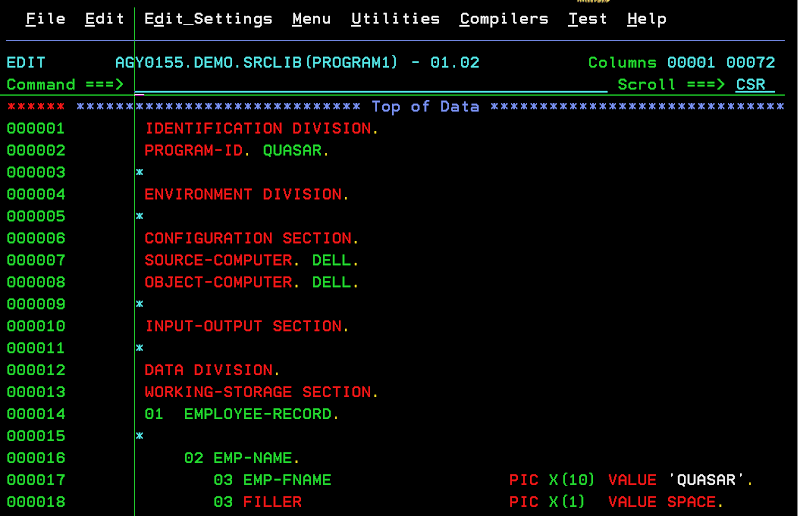Let's guide you with your COBOL/Mainframe maintenance and Modernization
Get A Free Consultation
SERVICES
How we can help
Maintain COBOL code
Maintain and/or develop mainframe code. We will help you identify/fix issues and add new features to support the business

Business Analysis
Generate detailed flowcharts and documentation with line by line analysis for complex and lengthy COBOL programs and subroutines

Quality Control/Assurance
Provide Quality Control, Quality Assurance, Test & Defect management
Maintain
Maintain COBOL code
Our mainframe developers with 20+ years experience in mainframe technologies can maintain and/or develop mainframe code using:
- COBOL 390/Enterprise COBOL
- IMS DB/DC
- DB2 and its utilities like QMF & SPUFI
- VSAM files
- GDG’s
- REXX, CLIST, QUIKJOB
- SYNCSORT/DFSORT
- Batch job processing & JCL/PROCS
- Job monitoring tools like CA7
- Abend-AID, JHS, X/PTR
- SSI tables (Memory managed tables)
- MQ Messaging and Queueing
- Analysis tools FILEAID, FILEMASTER
- Debugging tools like XPEDITER, INTERTEST
- File transfer protocols FTP, SFTP
Business Analysis
We can perform in-depth analysis of the mainframe footprint in your organization and recommend short-term and long-term strategies and roadmap. Our experienced code diving and flow-charting experts can generate detailed flowcharts and documentation with line by line analysis for complex and lengthy programs and JCLs. These documents can be used to:
- Extract business and architectural requirements
- Plan and prepare for the migration of the current application into any new architecture and programing language enabling to design the application from the ground up, ensuring all business logic is intact
- Help identify obsolete/dead code

Quality
Quality Control/Assurance
Provide Quality Control/Assurance, Test/Defect management and production on-call support for all of the mainframe footprint within the organization
Mainframe platform
Is the Mainframe DEAD?
No, absolutely not! Based on estimates, about 100 billion lines of COBOL code is still active on the mainframe platform. About 71% of Fortune 500 companies still have a mainframe footprint and COBOL is used in almost every industry vertical including the largest banks, auto manufacturers, insurance companies, telecom companies, universities, government agencies and airlines to name a few.
Mainframes were introduced by IBM in the early 1960’s and soon became synonymous with IBM products as they quickly had a huge market-share. They have evolved from the mammoth machines they once were into very small, exponentially superior and faster machines, supporting a plethora of operating systems and applications. The mainframe operating system too has had its own revisions over the years and can now connect to other frameworks and technologies.
Mainframe platform
Advantages and Disadvantages
The key benefits of the mainframe are the following:
- Very effective and efficient in large scale transactional processing
- Time sharing option effective in supporting thousands of concurrent users and applications
- Supports large bandwidth communication
- Adhere to IBM’s “RAS” motto of Reliability, Availability, Serviceability and provide a super secure platform
Now that we listed the main benefits let’s take a look at some disadvantages:
- Cost of ownership – Only big corporations can afford to keep up with hardware and licensing costs to keep the applications running on the mainframe platform
- Aging resource pool – Most mainframe programmers are either nearing retirement or are already retired. In addition, no formal training is available or is in demand as Generation X and Millennial software programmers seem to be inclined to learn cutting edge technologies over mainframe technologies
Work for us
Are you a mainframe programmer?
We would like to hear from you
Work with us
Do you need help maintaining your COBOL code?
Let’s help you maintain your COBOL/Mainframe Assets. Contact us for a free consultation




